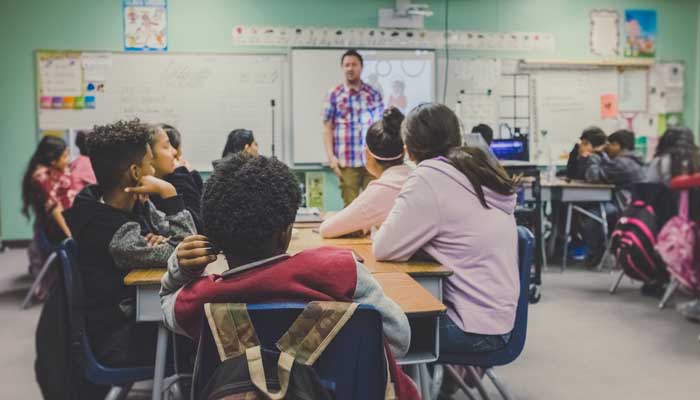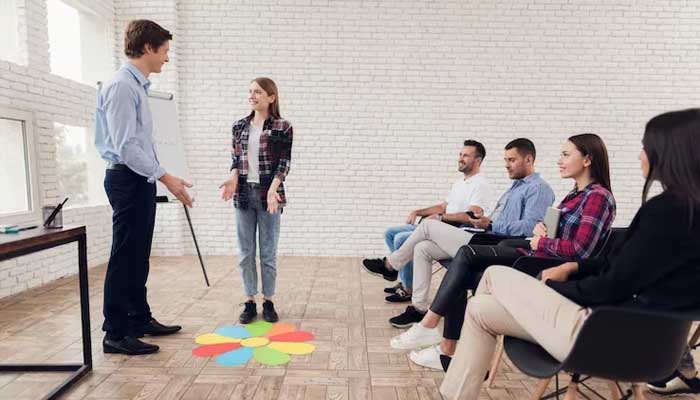12 Effective Strategies for Teaching Critical Thinking Skills
Critical thinking is an essential skill for students to succeed in life, but teaching it can be tricky. It’s more than just logical reasoning—it’s about independent thought, analyzing ideas, and being open to diverse viewpoints. Here are 12 strategies, complete with examples, that can help integrate critical thinking into your classroom.
1.Start with a Thought-Provoking Questio

Instead of diving straight into a lesson, begin with a question that requires more than a simple answer. For instance, in a history class, instead of asking “Who won the Civil War?”, ask “What factors contributed to the outcome of the Civil War, and how did those factors shape America’s future?” This type of question encourages students to think critically and dive deeper into the subject. You can have them brainstorm ideas on the board to kick off a discussion, helping them see multiple angles.
2. Build a Knowledge Base

Critical thinking relies on understanding the material, so it’s essential to provide background information before jumping into problem-solving. For example, in a science class about climate change, start by reviewing data on global temperature trends, greenhouse gases, and weather patterns. This gives students a solid foundation, enabling them to analyze the causes, impacts, and possible solutions to climate change.
3. Explore Classic Literature

Classical works are a goldmine for critical thinking. For example, in studying Shakespeare’s *Macbeth*, you can ask students to analyze the motivations of the characters. Why did Macbeth choose to murder King Duncan? Is Lady Macbeth a villain or a victim of her circumstances? By discussing these complex questions, students learn to identify themes like power, guilt, and fate and explore how they apply to modern issues.
4. Design a Country

Creating a hypothetical country can encourage students to explore various disciplines such as history, geography, and politics. For instance, in a social studies project, you could ask students to form a new country, determine its resources, design its government, and create a culture. Students could debate the merits of different government systems or figure out how to balance resources to meet the needs of the population. This hands-on project promotes critical thinking as they evaluate and make decisions about the world around them.
5. Promote Information Literacy

In today’s digital age, the ability to assess and use information critically is vital. For example, if students are researching a topic like animal rights, you can teach them how to differentiate between credible sources (such as scientific journals) and biased or unreliable ones (like opinion blogs). Encourage them to ask questions like: “What evidence supports this claim?” or “Is this source reputable?” These skills help them filter and analyze information effectively.
6. Leverage Peer Collaboration

Collaborative learning encourages students to share ideas and problem-solve together. For example, you could have students work in pairs or small groups to solve a complex math problem, like finding the most efficient way to distribute resources in a town. Each student would bring their own perspective to the table, helping to create a more comprehensive solution. Peer collaboration builds skills in negotiation, communication, and compromise—all important elements of critical thinking.
7. Implement the “One Sentence” Method

This activity challenges students to summarize their understanding in a single, clear sentence. For instance, after reading a chapter of *The Great Gatsby*, each student writes one sentence about the book’s theme. They pass their paper to the next person, who adds another sentence to build on the original. This forces students to focus on the most important points and think critically about how each piece of information fits into the larger picture.
8. Focus on Problem-Solving

Present real-world problems that require critical analysis. For example, in a math class, you could present students with a scenario where they need to design a sustainable garden. They must use math to calculate the best layout, amount of sunlight, and water usage. By tackling this open-ended problem, students practice critical thinking while applying their knowledge in a practical context.
9. Engage in Role-Playing

Role-playing can help students understand different perspectives and analyze situations from multiple angles. For example, in a history class, have students research two opposing historical figures, such as Alexander Hamilton and Thomas Jefferson, and then role-play a debate on the role of government. This activity helps students develop empathy by seeing the conflict from another person’s viewpoint, promoting deeper critical thinking about historical events and decisions.
10. Use Visual Thinking

Sometimes, words alone can’t fully capture a concept. Encouraging students to draw or map out their ideas helps them think more clearly. For example, in a science class on ecosystems, you could have students draw a food chain, labeling producers, consumers, and decomposers. Visualizing the system helps them understand the interconnections between different organisms, promoting deeper thought about the environmental balance.
11. Make Critical Thinking a Priority

Integrate critical thinking into every lesson to make it a habit. For instance, in a language arts class, regularly ask students to question the author’s choices, such as, “Why did the author use this metaphor?” or “How does this character’s behavior reflect the broader theme of the story?” By making critical thinking a part of daily learning, students begin to approach all subjects with a questioning, analytical mindset.
12. Correct Misconceptions

Critical thinking is an ongoing process of refinement. For example, if students misunderstand a scientific concept, such as the laws of motion, guide them back to the core principles and ask questions that lead them to re-evaluate their assumptions. Help them identify where they went wrong, and encourage them to adjust their thinking. This reinforces the idea that critical thinking involves constantly questioning and revising one’s understanding.
The Impact of Teaching Critical Thinking
Teaching critical thinking not only enhances intellectual skills, but also prepares students for life beyond the classroom. It enables them to analyze information, evaluate sources, and make informed decisions. Moreover, by encouraging students to think critically, you help them develop creativity, empathy, and open-mindedness—skills that are essential for navigating the complexities of the modern world.
By fostering critical thinking, we’re not just helping students become better thinkers; we’re preparing them to be informed, responsible citizens who can contribute thoughtfully to society.






